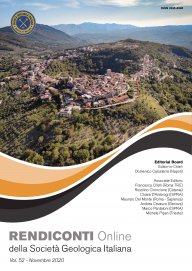
Numerical modeling for coastal environmental monitoring: oil spills simulation along the lower Adriatic coasts
Cosimo Cagnazzo (1), Ettore Potente (1), Sabino Rosato (2) & Giuseppe Mastronuzzi (1)
(1) Department of Earth and Geoenvironmental Science, University of Bari - 70121, Bari. (2) Serveco Srl - 74020, Montemesola (TA).
Corresponding author e-mail: cosimo.cagnazzo@uniba.it
Volume: 52/2020
Pages: 19-24
Abstract
The Mediterranean Sea is one of the high-risk areas for oil spills. In fact, along the coasts, there is a total annual traffic of about 200.000 large ships. In particular, oil traffic in the Mediterranean represents about 20% of the world’s maritime hydrocarbon traffic and amounts to over 360 million tons per year. Over the years, numerous environmental disasters have occurred caused by the sinking of oil tankers and which had a devastating impact on the entire coastal ecosystem. Among the most important disasters that occurred in the Mediterranean, there was the one caused by the Haven oil tanker sinking in the sea near Genoa in April 1991 where about 144.000 tons of crude spilled out in the sea. This study reports the simulation results of potential hydrocarbon beaching due to spills of petroleum products at sea and attributable to maritime accidents or accidents on offshore oil platforms. In particular, the lower Adriatic area was analyzed where, on the coastal strip, there is an important ecosystem preserved by the Regional Natural Park of the Coastal Dunes (BR). The study is part of the research project “SIAT - Integrated UAV / UTV system with remote control for the pollutants dispersion assessment in the coastal environment for remediation” in collaboration with the Department of Earth and Geoenvironmental Sciences of the University of the Bari, Serveco Srl and LETG (Littoral, Environnement, Télédétection, Géomatique CNRS) in Rennes, which aims to develop new monitoring and analysis technologies of the anthropic impact on coastal systems.
Keywords
Get Full Text